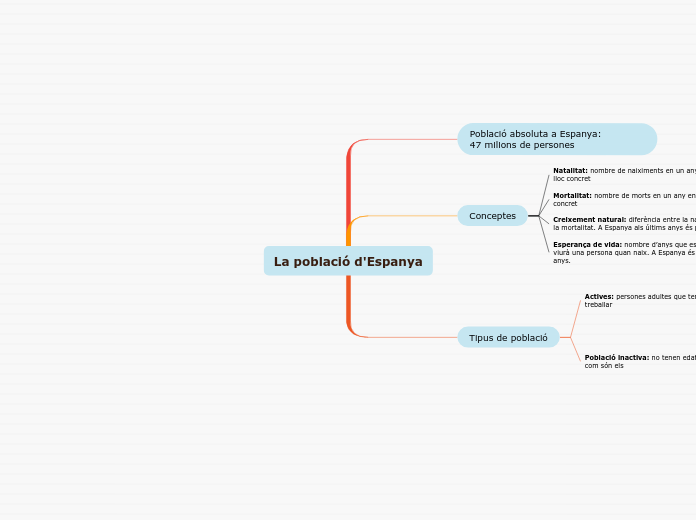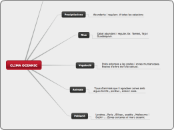La població d'Espanya
To name your story, you have to think about the overall message and what you want your audience to understand from the story. Also, make it relevant and easy to remember.
Tipus de població
The middle of the story is where you add layers of complications that will lead to the end. Reveal more about the character's journey. Did their personality go through changes? How did they overcome the challenges? And as you build up the story’s central conflict, make it more personal to that character. Also, from the middle act, you have to lead into the final act.
Població inactiva: no tenen edat per a treballar, com són els
Your character(s) need(s) motivation in order to solve the challenge(s).
mestresses de casa
estudiants
Secondary characters also might have motivs beacuse of which they may cross path with main character or which might trigger them to help the main character.
Menors de 16 anys
Secondary characters might also have motives that lead them to cross paths with the main character or which might trigger them to help the main character.
Jubiltas
Why does your character need to confront this challenge? What does he/she expect to accomplish by solving it?
See a few examples:
- will marry in 3 days
- can fix the mistakes of the past
Actives: persones adultes que tenen capacitat per a treballar
Each story has a main character and that character usually needs to solve a problem or challenge. The character's challenge is the one that creates tension throughout the story.
Parades o desocupades: busquen un treball
Type in any other challenges which other characters in the story need to face.
Ocupades: estàn treballant
In most stories, there are 3 challenges. The number 3 is a mystical number symbolizing completeness. Try to come up with interesting challenges with which your character needs to struggle.
See a few examples below:
- turns into a werewolf at night
- is sent back in time
Conceptes
Esperança de vida: nombre d’anys que es creu que viurà una persona quan naix. A Espanya és de 82 anys.
Creixement natural: diferència entre la natalitat i la mortalitat. A Espanya als últims anys és positiu.
Mortalitat: nombre de morts en un any en un lloc concret
Natalitat: nombre de naiximents en un any en un lloc concret
Població absoluta a Espanya: 47 milions de persones
In the beginning of the story (or the exposition), you will need to introduce the setting and characters. You might also want to introduce the main conflict. This part of the story is important because it gives the reader necessary background information and maybe even a first insight into a character’s personality.










